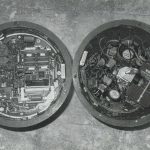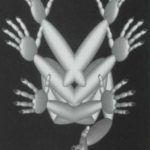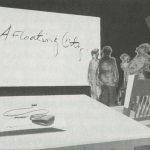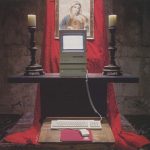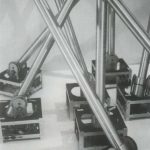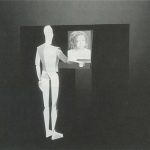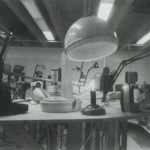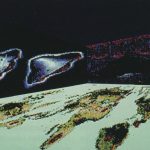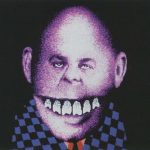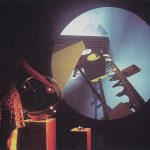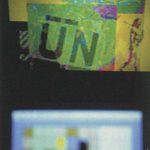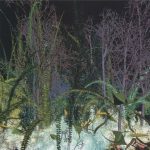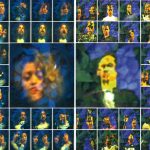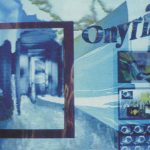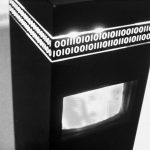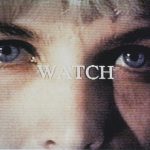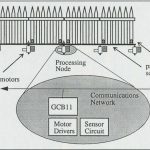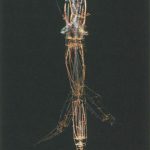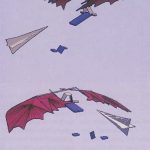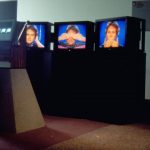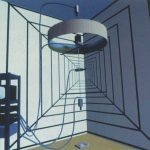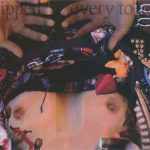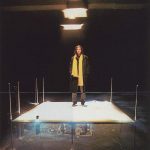SIGGRAPH 1993: Machine Culture
Art Show Overview:
Machine Culture: The “Virtual Frontier”
The goal of this exhibition is to offer a survey of the current state of interactive and virtual art practice around the world. Many people are unaware that the full name of SIGGRAPH is “special interest group on graphics and interactive techniques.” In this spirit, machine culture takes a wide view of interactive techniques. Not only will you find screen-based and interactive laserdisk artworks, but interactive environments, robotic artworks, and immersive systems. Artists in this exhibition are gathered from many countries, including Australia, Canada, Holland, Japan, Germany and the U.S.
1993 is perhaps the first time that an exhibition of such scale has been possible. This is due in part to the availability of sophisticated technology to artists, and simultaneously, the cultural interest in these technologies as culture machines. SIGGRAPH is perhaps the only place that such an exhibition could occur, as it gathers both the technology and the goodwill of the makers of these technologies.
Artistic use of interactivity is a new field. For the artists included here, the nature of interaction and the interactive interface is a prime concern. The definition and use of that interface in this exhibition is diverse, and quite at odds with the increasingly narrow usage in interactive consumer electronics. The interface is the place where the machine meets culture; it is the place where the machine meets the body. These artists question which parts of the body the machine might converse with, and in what ways. Most of the artists represented in this exhibition are newcomers to SIGGRAPH, younger artists, many from outside the U.S., with novel approaches to interactive technologies. These artists have gone to considerable effort to bring and install their complex works for the consideration of the SIGGRAPH audience.
The catalog to this exhibition, the machine culture section of the 1993 Visual Proceedings, has offered these artists the opportunity to speak about their complex works and the ideas behind them. The catalog also includes a specially commissioned set of essays that is the first collection to address interactive and virtual art practice. Though some of the essayists are familiar to the SIGGRAPH membership, many are unfamiliar, and offer dynamic critiques. It is my hope that machine culture will bring the SIGGRAPH community together with active artists and thinkers in interactive technologies from the art world in an exchange of ideas and in the hope that a more sophisticated discussion of the cultural dimension of interactivity will result.
We are witnessing the construction of a new professional identity the interactive media artist, an inter-disciplinarian as comfortable with cultural coding as with computer code, and as familiar with the jargon of the art studio as the computer lab. There are those of us who have crossed over, in one direction or the other, but the generation at home in both places is just arriving. Some of them are in this exhibition. It is they who will invent interactive art.
I’d like to express my gratitude to the artists and essayists without whom this publication and exhibition would have been impossible, and likewise to the companies and individuals who have loaned hardware and software. The members of the advisory committee for machine culture are: Gary Warner, Australian Film Commission; Erkki Huhtamo, independent theorist and curator (Finland); Jeffrey Shaw, director of the Institute for Image Media,Zentrum fur Kunst und Medientechnologie, Karlsruhe, Germany; Richard Wright, lecturer in computer graphics, London Guildhall University (Formerly City of London Polytechnic), UK; and Machiko Kusahara, independent curator and consultant, Japan. The committee has functioned in a different fashion from SIGGRAPH art show committees of the past. All the committee members live outside of the U.S. and have an active professional interest in interactive media. My charge to them was to suggest artists and artworks for the exhibition and assist those artists to take part in the exhibition-I am grateful for their advice and assistance. I’m particularly grateful to my assistant in the machine culture project, Harry Fozzard, who has taken an active, intelligent, and responsible role in planning the exhibition, in editing and designing this document, in corresponding with contributors and sponsors and all the other duties that fell to him. I’d also like to thank my colleagues on the SIGGRAPH 93 committee with whom it has been a pleasure and an honor to work, in particular, Alyce Kaprow, who has been a constant source of advice and good humor. And thanks especially to Molly Morgan-Kuhns, Mark Resch, and Bob Judd for their support and guidance. This project is dedicated to the memory of Felix Guattari.
SIMON PENNY
Machine Culture Chair,
Carnegie Mellon University

